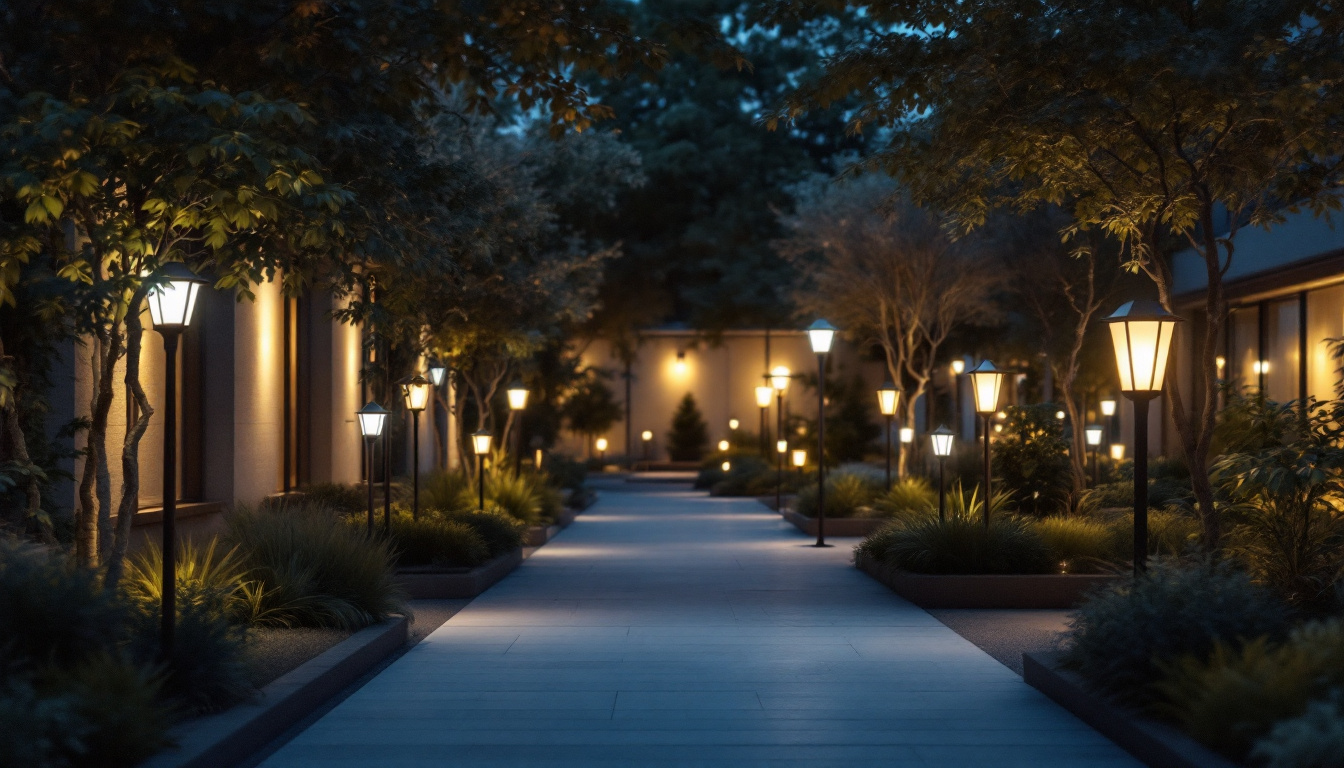
Can lights, also known as recessed lights or downlights, are a staple in modern lighting design. Their sleek, unobtrusive appearance makes them ideal for a variety of settings, from residential to commercial spaces. For lighting contractors, selecting the right size of can light—commonly 4-inch or 6-inch diameters—is a critical decision that impacts both aesthetics and functionality.
Choosing between 6-inch and 4-inch can lights isn’t merely about size; it involves understanding the lighting requirements of the space, energy efficiency, installation considerations, and the desired ambiance. This article delves into the crucial differences between these two popular sizes, providing contractors with the insights needed to make informed recommendations and installations.
When considering the installation of can lights, it’s essential to evaluate the ceiling height and the intended purpose of the lighting. For instance, in rooms with higher ceilings, 6-inch can lights can provide a broader beam spread and greater illumination, making them suitable for areas that require more light, such as kitchens or living rooms. Conversely, 4-inch can lights are often preferred in spaces with lower ceilings or where a more subtle lighting effect is desired, such as in hallways or bedrooms. Additionally, the choice of trim and bulb type can significantly influence the overall lighting effect, with options ranging from warm white to cool daylight tones, allowing for customization based on the client’s needs.
Moreover, energy efficiency is a growing concern in today’s lighting market. LED technology has revolutionized the way can lights are perceived, offering longer lifespans and lower energy consumption compared to traditional incandescent bulbs. Lighting contractors should be well-versed in the various LED options available, including dimmable features and color temperature variations, to provide clients with energy-saving solutions that do not compromise on quality. Furthermore, understanding the latest building codes and regulations regarding energy efficiency can enhance a contractor’s credibility and ensure compliance in their installations, ultimately leading to satisfied customers and repeat business.
The most apparent difference between 6-inch and 4-inch can lights is the diameter of the fixture, which directly affects the light distribution. A 6-inch can light typically offers a wider beam spread, making it suitable for general ambient lighting in larger rooms or open areas. Its broader coverage reduces the number of fixtures required to illuminate a space evenly, which can be a cost-saving factor in large installations. This efficiency is particularly beneficial in commercial settings, where extensive lighting can significantly impact energy costs. Additionally, the larger size allows for the integration of more powerful bulbs, further enhancing the overall brightness and effectiveness of the lighting scheme.
Conversely, 4-inch can lights provide a narrower beam angle, which is ideal for accent lighting or highlighting specific areas. Their focused illumination works well in smaller rooms, hallways, or as task lighting above kitchen counters or workspaces. The precision of 4-inch fixtures allows for layering of light, adding depth and dimension to interior design. This versatility makes them a popular choice in modern homes where design aesthetics are paramount. For instance, strategically placed 4-inch can lights can create a gallery-like atmosphere, drawing attention to artwork or architectural features while maintaining a cozy ambiance.
Another consideration is the fixture depth. Generally, 6-inch cans are deeper than 4-inch models, which can pose challenges in spaces with limited ceiling clearance or in retrofit installations. Contractors must assess the available plenum space before recommending larger fixtures to avoid complications during installation. In homes with low ceilings or in basements, the shallower profile of 4-inch can lights can be advantageous, allowing for a more streamlined appearance without sacrificing functionality. Moreover, the reduced depth can also minimize the risk of glare, creating a more comfortable lighting experience for occupants.
Furthermore, the choice between 6-inch and 4-inch fixtures can also influence the overall design theme of a space. Larger fixtures may lend themselves to a more traditional or industrial look, while smaller fixtures can enhance a minimalist or contemporary aesthetic. Homeowners and designers alike should consider not only the practical aspects of light distribution but also how the size of the fixtures complements the architectural elements of the room. The interplay between fixture size, ceiling height, and room dimensions plays a crucial role in achieving a harmonious lighting design that enhances both functionality and style.
From an energy perspective, 6-inch can lights often accommodate higher wattage bulbs, resulting in greater lumen output. This makes them suitable for spaces requiring brighter illumination without installing multiple fixtures. However, advances in LED technology have significantly narrowed the performance gap, with 4-inch LED cans now offering comparable brightness at a fraction of the energy consumption.
Lighting contractors should consider the lumen-to-watt ratio when selecting fixtures. For example, a 6-inch LED can light might deliver 800 lumens at 10 watts, while a 4-inch LED can can provide 600 lumens at 7 watts. The difference in brightness is noticeable but can be mitigated by strategic fixture placement and layering.
Heat management is another factor influencing fixture performance and longevity. Larger 6-inch cans generally have better heat dissipation due to their size, which can prolong the life of the bulb and reduce maintenance costs. However, modern LED fixtures are designed with efficient thermal management systems, making 4-inch cans equally reliable when sourced from reputable manufacturers.
Installation complexity varies between 6-inch and 4-inch can lights. The larger size of 6-inch cans can make them more cumbersome to handle, especially in tight or confined ceiling spaces. Additionally, retrofitting 6-inch fixtures into existing ceilings may require cutting larger holes and potentially reinforcing ceiling joists.
In contrast, 4-inch cans are generally easier to install in retrofit scenarios due to their smaller footprint. They require less ceiling space and can often fit into areas where 6-inch fixtures are impractical. For contractors working on older buildings or spaces with limited ceiling depth, 4-inch cans offer a more versatile solution.
Contractors must also consider local building codes and safety regulations. Both 4-inch and 6-inch can lights must meet standards for fire safety, insulation contact (IC) ratings, and energy efficiency. IC-rated fixtures are designed to be installed in direct contact with insulation without risk of overheating, a crucial consideration in many residential projects.
Ensuring that the selected can lights comply with relevant codes not only guarantees safety but also prevents costly rework and liability issues. Lighting contractors should stay updated on evolving regulations to advise clients accurately.
The size of can lights significantly influences the visual balance of a room. Larger 6-inch fixtures tend to stand out more, which can be beneficial in spacious areas with high ceilings, where smaller fixtures might appear lost or insufficient. They contribute to a more substantial presence and can complement bold interior designs.
On the other hand, 4-inch can lights offer a subtler, minimalist look that blends seamlessly with modern and contemporary aesthetics. Their compact size allows for more fixtures to be installed without overwhelming the ceiling plane, enabling intricate lighting designs that highlight architectural features or artwork.
Both 4-inch and 6-inch can lights are available in a variety of color temperatures, from warm white to daylight, allowing contractors to tailor the ambiance to the client’s preferences. Additionally, compatibility with dimmer switches is essential for creating flexible lighting environments. Contractors should verify that the fixtures and bulbs selected support dimming without flicker or noise, regardless of size.
Generally, 6-inch can lights and their compatible bulbs tend to be slightly more expensive than 4-inch options due to their size and higher lumen capacity. However, the cost difference is often offset by the reduced number of fixtures needed to illuminate a space adequately. For example, a large living room may require fewer 6-inch cans compared to a greater number of 4-inch cans to achieve the same light level.
Labor costs can also vary. Installing fewer 6-inch fixtures may reduce overall labor time, but the complexity of handling larger cans and potential ceiling modifications can increase installation difficulty. Conversely, 4-inch cans, while easier to install individually, might require more units and thus more time to complete the project.
Lighting contractors should evaluate the total cost of ownership, considering both material and labor expenses, to provide clients with accurate estimates and value-driven solutions.
Ultimately, the decision between 6-inch and 4-inch can lights hinges on a comprehensive assessment of the project’s functional and aesthetic requirements. For large, open spaces requiring broad illumination, 6-inch cans often provide the most efficient and visually pleasing solution. In contrast, 4-inch cans excel in smaller rooms, accent lighting, and retrofit projects with limited ceiling space.
Lighting contractors should approach each project with a flexible mindset, considering factors such as ceiling height, room size, lighting layers, energy efficiency goals, and client preferences. Combining both sizes within a single project is also a common and effective strategy, enabling contractors to create dynamic lighting schemes that enhance both form and function.
By understanding the nuances of 6-inch versus 4-inch can lights, contractors can deliver expert guidance, optimize installation outcomes, and elevate the overall lighting experience for their clients.
Ready to make an enlightened choice for your next lighting project? At LumenWholesale, we provide lighting contractors with the superior, spec-grade can lights you need to achieve the perfect balance of form and function. Our 4-inch and 6-inch options are designed to meet your project’s unique requirements, all at unbeatable wholesale prices. Say goodbye to middleman markups and hello to our extensive selection, free shipping, and the best value in lighting solutions. Elevate your lighting game with LumenWholesale, where quality meets affordability and convenience. Wholesale Lighting at the Best Value.

Discover effective strategies to train your team in mastering porch light motion sensors.

Discover the essentials of LED outdoor lamps in just five minutes with this concise guide tailored for lighting contractors.

Discover the essential insights lighting contractors need to meet client expectations when installing recessed can lights.

Discover how affordable solar lighting solutions can revolutionize the business model for lighting contractors by significantly cutting costs and boosting sustainability.